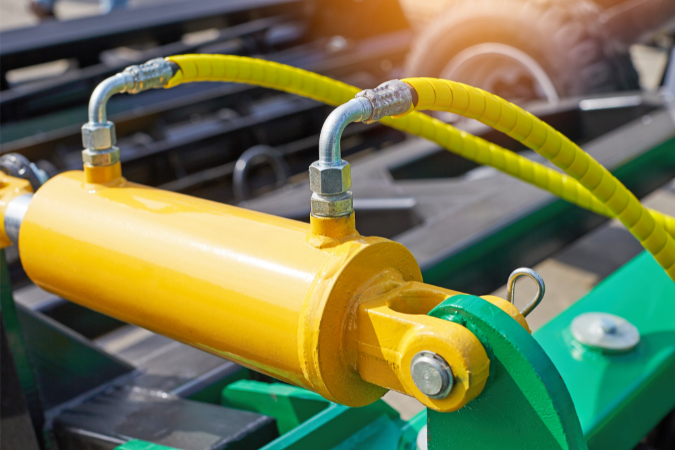Hydraulic systems have been widely used in industrial and power generation applications for decades, proving to deliver exceptional and reliable power transmission mechanisms, precise control, and versatile operation. Hydraulic solutions are mainstays in the fields of automotive manufacturing, aerospace, construction, and civil engineering, and in recent years their role in renewable energy generation is also growing, presenting promising opportunities for fluid power solutions in a broader range of applications.

The Value And Flexibility Of Hydraulic Systems
At their core, hydraulic systems function by forcing pressurised fluid or gas through a network of pipes, valves, and actuators to transmit power and generate movement. This allows extremely tight conservation of energy and a level of efficiency difficult to match with mechanical systems. In the renewable energy sector, hydraulic systems have the potential to transmit substantial forces over long distances with minimal loss of power, making them particularly useful in applications requiring high torque and precise control, and offering design engineers the flexibility and adaptability to respond to changing energy demands.
Hydraulic systems are already making a strong impact in the renewable energy industry, predominantly in the wind power and hydro-electric power sectors:
Wind energy: in wind turbines, hydraulic applications are employed for pitch control, braking, and yaw control, helping the wind turbine adjust its blade angle relative to the oncoming winds to ensure optimum aerodynamics and maximising the amount of energy captured from the wind, while sustaining a smooth, precise, and maintenance-efficient operation.
Hydro-electric power: hydraulic systems also play a key role in hydropower generation, e.g. by enabling the operation of various gates and valves to regulate the flow of water through dams. Hydraulic systems are also used to control the position of turbines and maintain consistent water pressure across the power generation process.
Advantages Of Hydraulic Systems For The Renewable Energy Sector
A big advantage of hydraulic systems for renewable energy engineers is the improvement in efficiency they offer over mechanical systems. By allowing precise control and maximising the conservation of energy, hydraulic systems can contribute to increased overall performance throughout the installation. Hydraulic systems are also known for their reliability and robustness, ensuring a long service life and minimising maintenance requirements – a crucial consideration for renewable power installations in remote locations.
Hydraulic systems also deliver advantages in terms of adaptability and scalability, and can be engineered to suit a wide range of power requirements, from small scale commercial installations to large offshore wind farms tied to the National Grid. This flexibility gives design engineers greater scope to adapt their designs to the unique needs of each renewable energy project.
Challenges And Limitations Of Hydraulic Systems
While hydraulic systems are often a match made in heaven for renewable energy applications, engineers should also consider the environmental concerns arising from the dependence of hydraulic systems on fluid power. The leakage of hydraulic fluid can lead to a range of detrimental environmental issues, such as contamination of water sources, and on remote sites this may not be detected until significant damage has been accrued. Any hydraulic system design must, therefore, ensure seamless containment and monitoring safeguards at the design stage, and implement an appropriate maintenance strategy after installation to mitigate these risks.
What Next?
To find out more about hydraulic systems and how they can benefit renewable energy applications, please get in touch with one of the fluid power specialists at Hydrastar today by clicking here.


